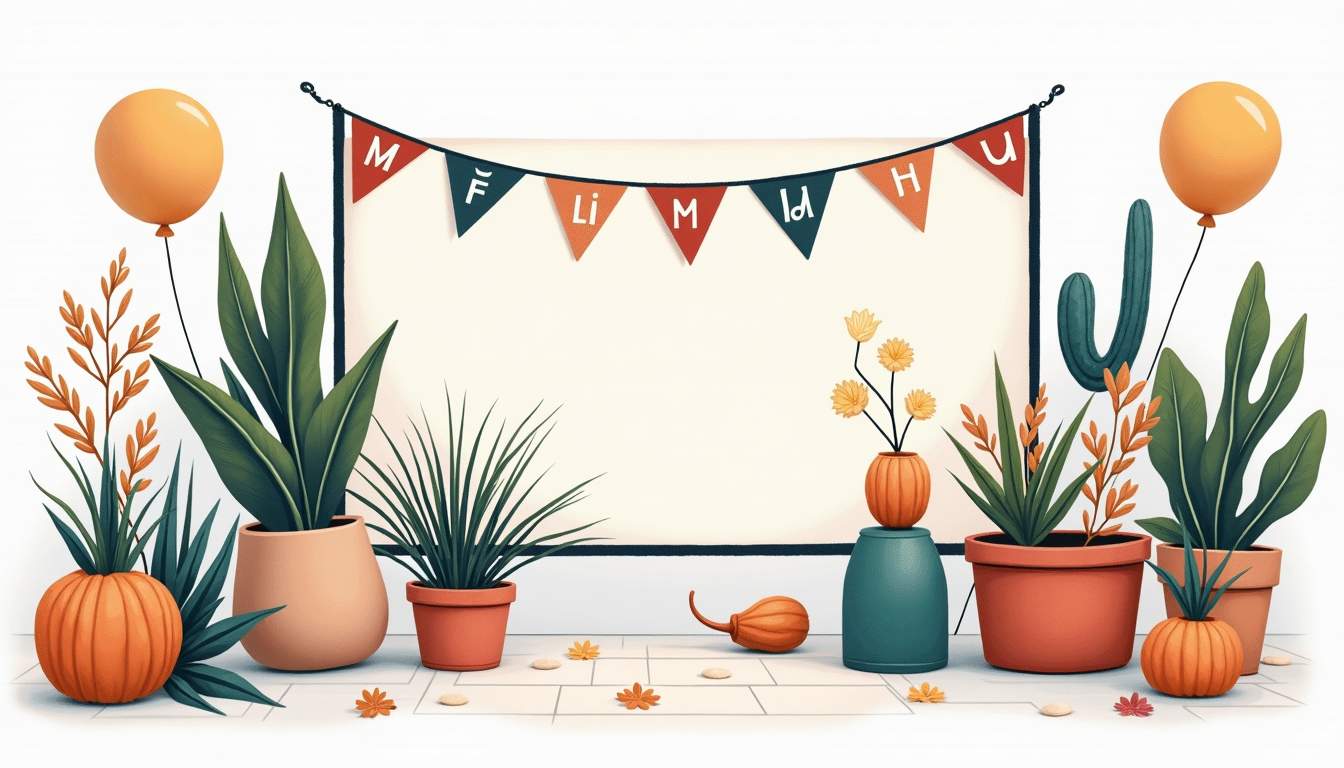Imagine walking into an event where every detail feels like it was made just for you. The lighting, the music, the food – all perfectly tailored to create an unforgettable experience. That’s the power of bespoke event concepts. They don’t just fill a room; they spark conversations, create memories, and turn guests into ambassadors.
Why Customization Matters More Than Ever
Events are no longer just about gathering people under one roof. They’re about crafting moments that resonate deeply. When attendees feel that an event speaks directly to their tastes, values, or aspirations, they engage more fully. This kind of connection is rare and precious.

Mass-produced events often fall flat because they lack personality. When everything is generic, guests quickly lose interest. On the other hand, bespoke concepts allow for a unique narrative that can be woven throughout the event, from invitations to the final toast. This narrative becomes the story guests tell long after the event ends.
Creating Emotional Connections Through Design
Design isn’t just about aesthetics. It’s a language that communicates mood, intention, and identity. Customizing design elements-like color palettes inspired by a brand’s heritage or decor that reflects a theme meaningful to the audience-helps guests feel seen and valued.
Take, for example, an event held in a historic venue. Instead of masking its character, a bespoke concept might highlight the venue’s quirks and stories, incorporating them into the event’s theme. This approach invites guests to step into a narrative rather than just attend a function. By integrating local artisans or cultural elements into the decor, the event not only celebrates its surroundings but also fosters a sense of community. Guests can connect with the venue on a deeper level, as they recognize the authenticity and effort put into creating an immersive experience.
Furthermore, customization extends beyond visual elements; it encompasses the entire guest experience. Personalized itineraries, tailored menus that cater to dietary preferences, and interactive activities that resonate with attendees’ interests can transform an ordinary gathering into a memorable occasion. For instance, including a live cooking demonstration featuring local ingredients can engage the senses and spark conversations among guests, enhancing their overall enjoyment. When every detail is thoughtfully curated, attendees leave with a sense of belonging and a story to share, ensuring that the event lingers in their minds long after the last guest departs. To explore more about creating personalized event experiences, visit The Ann Savva Group.
Interactive Experiences That Spark Conversations
People remember how an event made them feel more than what they saw or heard. Interactive experiences tap into this by involving guests directly, making them active participants rather than passive observers.
Immersive Storytelling
Imagine an event where guests move through different “chapters” of a story, each room or area revealing new elements through actors, visuals, or soundscapes. This kind of immersive storytelling transforms the event into an adventure, encouraging guests to discuss and share their experiences.
For example, a product launch could be framed as a journey through the product’s development, challenges, and future possibilities. Guests don’t just learn about the product—they live its story. As they navigate through the narrative, they encounter characters who embody the brand’s values, interact with props that symbolize key milestones, and even participate in mini-challenges that reflect the product’s features. This active engagement not only deepens their understanding but also creates memorable moments that they are likely to recount long after the event.
Hands-On Workshops and Collaborative Activities
Workshops that invite guests to create or contribute something tangible foster a sense of ownership and connection. Whether it’s crafting a personalized souvenir, collaborating on a large-scale art piece, or participating in a cooking class, these activities break down barriers and encourage natural conversations.
Such experiences also provide excellent icebreakers. When people work together toward a common goal, they’re more likely to open up and form lasting connections. Consider a scenario where guests are divided into teams to tackle a creative challenge—perhaps designing a new product concept or brainstorming solutions for a community issue. As they collaborate, they share ideas, debate possibilities, and ultimately bond over their shared investment in the outcome. This not only enhances the event’s atmosphere but also cultivates a network of relationships that can extend well beyond the event itself.
Moreover, the act of creating something together can lead to unexpected insights and laughter, making the experience not just productive but enjoyable. The tactile nature of these workshops often leads to a sense of accomplishment, as participants leave with something they’ve made and memories of the collaborative effort that went into it. This blend of creativity and camaraderie ensures that the event resonates with attendees on a deeper level, sparking conversations that continue long after the final curtain falls.
Personalization Through Technology
Technology has revolutionized how events can be customized. When used thoughtfully, it enhances the guest experience without overwhelming it.
Data-Driven Invitations and Communications
Personalized invitations that reflect a guest’s interests or past interactions with a brand set the tone before the event even begins. Using data to tailor messaging makes guests feel recognized and valued. This approach not only fosters a sense of belonging but also increases the likelihood of attendance, as guests are more inclined to engage with content that resonates with their preferences. By analyzing previous attendance data, brands can identify trends and craft invitations that speak directly to the desires of their audience, making each guest feel uniquely catered to.
During the event, apps or digital platforms can guide guests through personalized agendas, recommend sessions or activities based on preferences, and facilitate networking by suggesting relevant contacts. These tools can also offer real-time updates, ensuring that attendees are aware of any changes or highlights throughout the event. By integrating features such as live polls or Q&A sessions, organizers can further enhance engagement, allowing guests to influence the event dynamically and feel like active participants rather than passive observers.
Augmented Reality and Virtual Enhancements
Augmented reality (AR) can add layers of engagement. For instance, guests might use their smartphones to unlock hidden content, explore interactive exhibits, or participate in gamified challenges. These digital enhancements create buzz and encourage social sharing. Imagine an art exhibit where attendees can point their devices at a painting to reveal its history or the artist’s inspiration, creating a deeper connection to the artwork. Such experiences not only captivate guests but also encourage them to share their discoveries on social media, amplifying the event’s reach and impact.
Virtual reality (VR) can transport guests to places or scenarios impossible to recreate physically, offering novel experiences that become talking points long after the event. For example, a travel brand might use VR to take guests on a virtual journey to exotic destinations, allowing them to experience the sights and sounds of a location before they even book a trip. This immersive technology not only captivates the audience but also serves as a powerful marketing tool, as guests leave with vivid memories and a heightened desire to explore the offerings presented. By incorporating these cutting-edge technologies, event organizers can create unforgettable experiences that resonate long after the final curtain falls.
Food and Drink as Storytelling Tools
What’s served at an event says as much as the décor or entertainment. Bespoke culinary experiences can elevate an event from memorable to legendary.

Menus That Reflect the Event’s Theme
Curating a menu that ties into the event’s story or brand identity adds depth. For example, a sustainability-focused event might feature locally sourced, organic dishes that highlight regional flavors.
Pairing food with stories-like the origin of an ingredient or the inspiration behind a dish-turns dining into an immersive experience. Guests engage their senses and their curiosity simultaneously.
Interactive Food Stations
Stations where guests customize their meals or drinks encourage mingling and conversation. A build-your-own cocktail bar or a chef-led tasting station invites guests to experiment and share their creations.
These interactive elements make food a catalyst for connection, not just sustenance.
Unexpected Entertainment That Leaves a Mark
Entertainment should surprise and delight, not just fill time. Bespoke events often feature acts or experiences that guests wouldn’t expect but instantly appreciate.
Local Talent and Cultural Highlights
Showcasing local artists, musicians, or performers adds authenticity and supports the community. It also gives guests a unique cultural experience they can’t get anywhere else.
Integrating cultural elements relevant to the audience or theme deepens engagement and sparks meaningful conversations.
Surprise Elements and Pop-Up Moments
Unexpected performances or interactive pop-ups keep guests on their toes. A flash mob, a roaming magician, or a sudden art installation reveal can create moments of delight that guests eagerly share.
These surprises break the routine and make the event feel alive and dynamic.
Crafting a Cohesive Narrative
All these elements-design, interaction, technology, food, entertainment-work best when tied together by a clear, compelling narrative. This story should reflect the event’s purpose and resonate with its audience.
When guests understand the “why” behind every detail, they feel part of something bigger. This sense of belonging is what truly gets people talking.
From Invitation to Farewell
Consider the guest journey from the moment they receive the invitation to the final goodbye. Every touchpoint is an opportunity to reinforce the narrative and deepen engagement.
Consistent messaging, thoughtful surprises, and meaningful interactions create a seamless experience that lingers in memory.
Final Thoughts
Bespoke event concepts aren’t just about luxury or extravagance. They’re about intentionality-crafting experiences that resonate, engage, and inspire. When every element is tailored thoughtfully, guests don’t just attend; they become part of the story.

That’s how events become unforgettable. That’s how they get people talking.